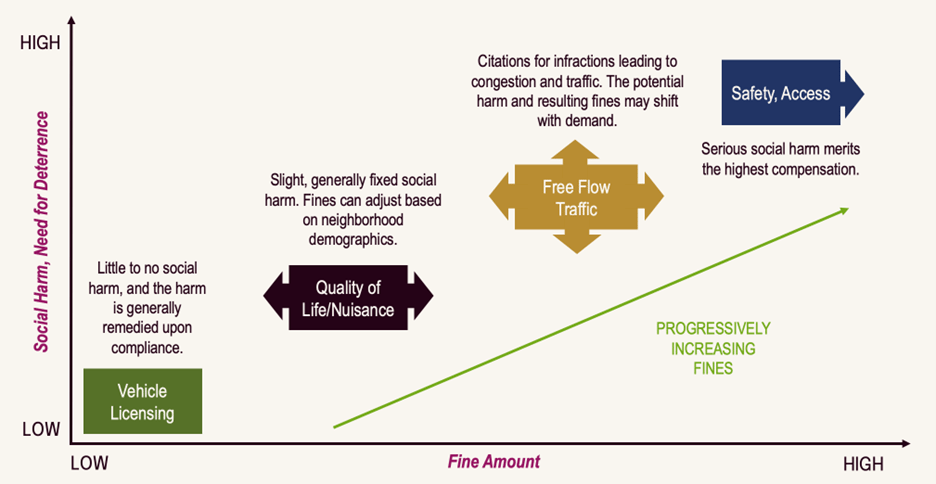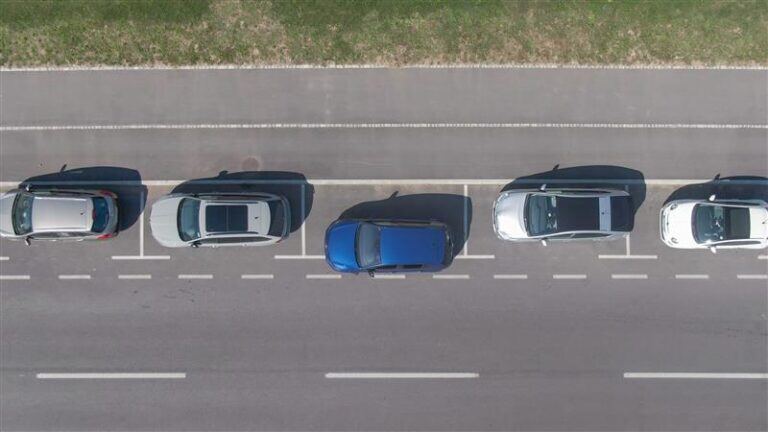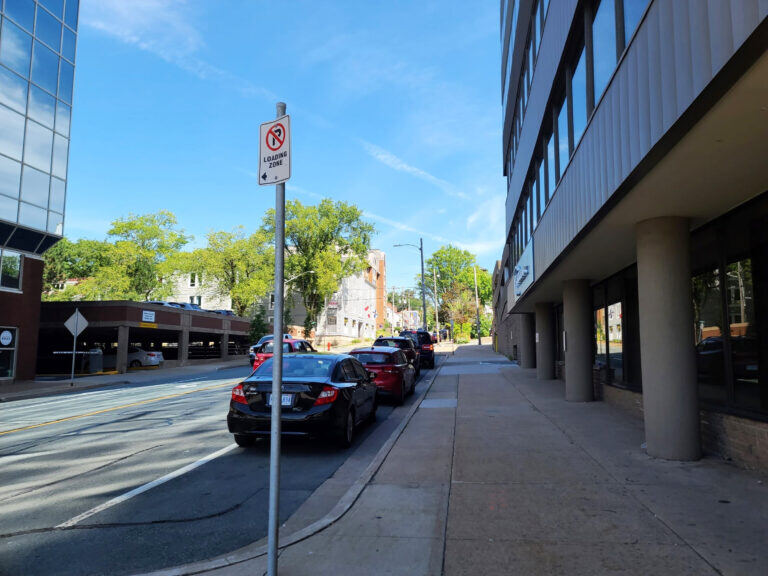3 min read
Aligning Fines with Social Harm: A Path to Equity in Parking Enforcement
Mary Martin Sep 23, 2024 12:00:00 AM

Effective parking enforcement is essential for managing curb usage and ensuring equitable access to public spaces. It fosters turnover, promotes public safety, and mitigates congestion. While the likelihood of receiving a citation is a crucial deterrent to illegal parking, the severity of fines also significantly impacts compliance. Fines that do not take into consideration the social harm caused by infractions can undermine enforcement efforts. Low fines may fail to deter behaviors that jeopardize safety, while excessively high fines can burden low-income motorists.
Rethinking Fines to Align with Social Harm
Many fine and fee structures were established long ago without the benefit of leveraging robust data analysis. Across the U.S., cities are now reconsidering parking fines to better mitigate any social harm they may pose. In New York City, for example, Council Members are advocating for income-sensitive parking tickets, while Los Angeles is reviewing fines to ensure they achieve intended policy outcomes, and Chicago is reassessing fine structures, particularly those impacting lower-income neighborhoods. These initiatives highlight a growing recognition for the need for equitable parking fines, but effective management requires data-driven insights. The following are key steps that can be taken to start a transformation.
I. Recognizing Societal Harm
Parking fines are designed to address societal harm. Understanding the specific harms caused by various infractions helps city officials classify fines appropriately. For example:
| Illegal Condition | Societal Harm | Harmed Party |
| Overstaying a meter | Reduces turnover, availability | Merchants, restaurants |
| Double parking | Makes trips longer | Commuters, drivers |
| Disabled placard abuse | Reduces access | Persons with disabilities |
| Blocked fire hydrant | Slows the ability to fight fires, puts lives at risk | Residents, businesses |
| Improper loading zone use | Prevents movement of commerce | Delivery companies, TNCs, freight, residents |
II. Classifying Fines
Fines should be based on the severity of the infraction. Cities can evaluate their fines, assigning higher penalties to violations that pose greater risks to safety, while reserving lower fines for minor infractions. This approach enhances fairness and reinforces the legitimacy of parking enforcement. When fines are proportionate to the harm caused, compliance is likely to improve.

III. Demographic Analysis of Fines
Understanding the impact of parking fines on disadvantaged communities is crucial. Layering in census tract data offers an enriched view of how fines affect different demographic groups. In Chicago, for instance, while the city has 50 wards and 56 zip codes, it’s also composed of 866 distinct census tracts, allowing for an in-depth neighborhood-by-neighborhood analysis of fine distribution by income, race, and more.
The below heat map coding represents how census tracts can be utilized to visualize demographics like income and race as well as identify citation trends.

Mapping citations by location of issuance and vehicle owner address can demonstrate inequity in the issuance of fines. A study curated by Trellint, for instance, revealed that vehicle licensing infractions disproportionately affected underprivileged communities, with significant fines issued for minor infractions. This unfortunate truth indicated a need for more equitable fine structures.
IV. Determining Collectability and Predicting Revenues
Parking fines contribute to municipal budgets for the broader benefit of the community, so city officials must consider the financial implications of adjusting fee structures. Trellint’s research has shown that different violation codes have varying levels of collectability. For example, fines for missing or expired plates tend to have lower collection rates than more serious infractions. Generally, collectability increases with reduced fines and decreases with higher penalties, but this varies by neighborhood.
This is not just theory, but proven with sophisticated analytical rigor. By establishing variable collection percentages based on the above criteria, Trellint calculates the revenue per violation issued—as well as and total budgetary impact—providing the client flexibility in selecting various models to ensure revenue integrity.

V. Using Data Science to Reset Fines
Trellint employs data science to create revised fine schedules. This involves deriving actionable insights and policy recommendations based on data analysis. Our goal is to minimize the financial impact on vulnerable populations while increasing fines for behaviors that cause significant social harm. Recommendations for our client study included:
- Reducing fines for various licensing infractions by as much as $150 (~7% of issued citations).
- Increasing fines for meter violations, residential parking permits, and congestion-related infractions by up to $15 (~33% of issued citations).
Trellint modeled the potential impact for our client, projecting an overall average fine decline of 3.83% while maintaining or reducing fines for two-thirds of violations, particularly those affecting disadvantaged motorists. Despite these significant reductions, it produced a modeled revenue improvement of approximately ~$500,000.
Other Factors for Consideration
The social harm caused by illegal parking can vary significantly based on time and location. A violation at 7 a.m. on a Monday might not create the same level of harm as the same violation at 7 p.m. on a Friday when parking is scarce. While some cities attempt to manage this with varied fine schedules, a more dynamic approach could be beneficial.
Cities could consider linking fines to occupancy rates, reducing penalties during low-demand periods and increasing them during peak times. Additionally, a system of “day fines”, where penalties are based on a percentage of daily income, could be effective. Our study found that motorists in disadvantaged neighborhoods were more likely to comply with street sweeping restrictions than those in wealthier areas.
A sliding scale for fines tied to neighborhood demographics and the true social harm of infractions could alleviate congestion, enhance community well-being, and optimize revenue by redistributing penalties based on the severity of the offense.
The Big Question: When was the last time your city reviewed its fines and fees?
There is no better time than now to re-evaluate your fine structure. Aligning parking fines with social harm is not just a matter of fairness; it’s essential for building trust in the enforcement system and promoting compliance. The best intensions of the design in the past didn’t have the now readily-available data science methodologies. By adopting equitable fine structures, cities can alleviate burdens on marginalized communities, enhance public safety, and foster a more inclusive environment.
At Trellint, we are committed to supporting cities in this vital endeavor, leveraging our expertise in data analytics and policy recommendations to create a more just parking enforcement system while benefiting monetary policy.




